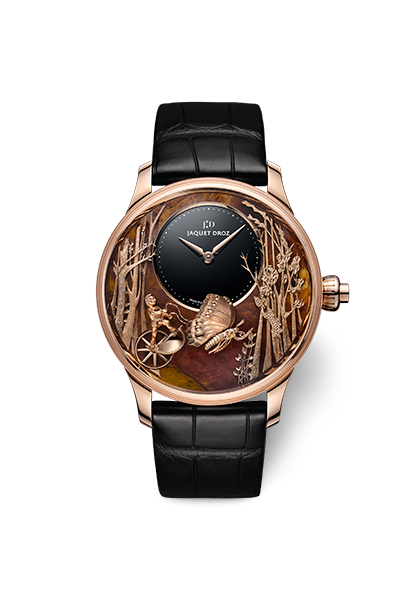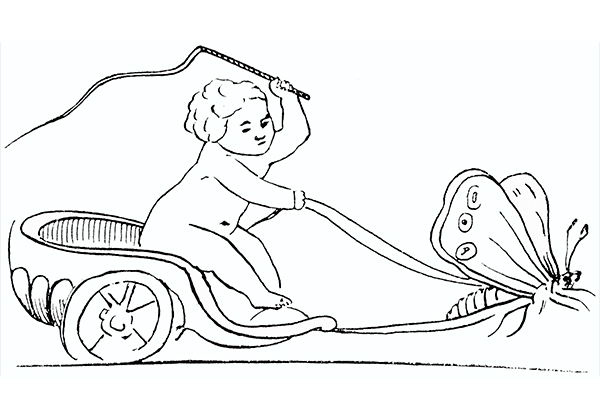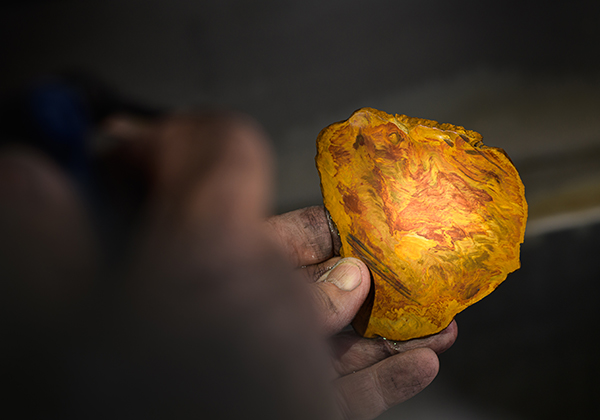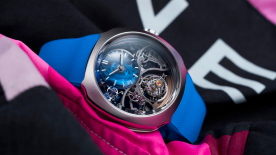We may think about watchmaking as if it’s a supremely ancient technique mired in the very roots of human history, and it kind of is, if you expand it into the broader category of timekeeping, with sundials and obelisks and clepsydrae and such. What differentiates primitive societies from early civilisations is the level of sophistication, how closely they adhere to the same rhythms and rituals of life — which is to say, the rise of human civilisation is deeply linked to a communal awareness of time and the development of timekeeping systems. In the overall chronology of the planet, however, the era of homo sapiens has been breathtakingly brief, consisting of the last 200,000 years, a mere blink of an eye compared to Earth’s 4.5 billion years.
Since our concept of time is built on the rotation of our planet on its own axis and its orbit around the Sun, it’s safe to say that basic units of chronometry such as the day and the year have existed as long as Earth has. In other words, every watch ever made is the expression of a 4.5-billion-year-old cosmic interaction. Doesn’t that blow your mind, just a bit?

The philosophy of watchmaking at Jaquet Droz takes a similarly wide view of human experience, as encapsulated in their tagline “Some watches tell time, some tell a story”. Despite the popularity of their classically designed timepieces, bone-white grand feu enamel dials and blued hands, it is the extravagantly emotional watches of Jaquet Droz, the fabulously wrought automata pieces that provoke the greatest excitement.
These are, for the most part, drawn directly from the history of the company, when Pierre Jaquet-Droz, his son Henri-Louis and his business partner/protegé Jean-Frédéric Leschot built large-scale mechanical automata and androids to amaze the royal courts and high society of 18th-century Europe.

The Loving Butterfly Automaton is inspired by a drawing that was programmed into The Draughtsman android of 1774, a whimsical depiction of a cherub in a butterfly-drawn chariot. When the pusher set into the crown of the Loving Butterfly Automaton is depressed, the gold butterfly microsculpture on the dial flutters its wings and the wheel of the chariot turns.
Thus far, the Loving Butterfly Automaton has been produced with a variety of dial materials since it debuted in 2017, such as onyx, aventurine, meteorite and opal. A just-released model features a dial of petrified wood from a fir tree that existed 150 million years ago, during the transition from the Jurassic to the Cretaceous Period.

The wood, commonly believed to have been mineralised through volcanic activity, with silica from lava and ash gradually replacing the organic matter, is known as Chinchilla Red. It is named for a town in Queensland, Australia (not for the South American rodent) and its warm hues comes from the trace amounts of metallic compounds such as iron oxide (rust).
The Jaquet Droz Loving Butterfly Automaton evokes an extraordinary time-scale, from the creation of Earth itself and the petrified forests of the Mesozoic Era to the horological accomplishments of the 18th century. Only one last timeframe to reference — that of the present day. Recent bushfires and ongoing deforestation have wreaked havoc upon the Australian ecosphere, and Jaquet Droz have dedicated a proportion of all sales of the Loving Butterfly Automaton with Chinchilla Red dial to reforestation efforts. The Loving Butterfly Automaton tells the time — it also tells many stories, but perhaps the most important one of all is the story of saving our future.





